Notable Deaths in 2020
Newsfrom Japan
Society Culture- English
- 日本語
- 简体字
- 繁體字
- Français
- Español
- العربية
- Русский
February 11
Nomura Katsuya (84): Pro baseball catcher, manager
A star catcher in the 1950s and 1960s for the Nankai Hawks, Nomura led the team through its golden age, becoming the first player in the postwar era to earn the triple crown for the league’s top batting average, home runs, and runs batted in. Despite his prowess, his play in the Pacific League with its sparse audiences brought him less recognition than that enjoyed by Oh Sadaharu and Nagashima Shigeo in the Central League. After retirement as a player, he became manager of the Yakult Swallows in 1990, applying rigorous research techniques to the game and his opponents and leading the squad to Japan Series championships in 1993, 1995, and 1997. He would go on to manage the Hanshin Tigers and Rakuten Eagles as well. As a TV commentator, he continued to win fans for his sharp tongue and witticisms on the game.
March 29
Shimura Ken (70): Comedian
Shimura started out as an assistant to the comedy group the Drifters before joining as a full member in 1974. He became a household name for appearances in the 1970s and 1980s on the supremely popular variety show Hachi ji da yo! Zen’in shūgō (It’s 8 O’Clock! Everybody Gather ‘Round) singing “Higashimurayama ondo,” a song named for his hometown in western Tokyo, and performing the hige dansu(mustache dance) with Katō Cha. Later characters he developed like Baka Tonosama (Stupid Lord) and Henna Ojisan (Weirdo Man) won him fans across the generations. On March 20, 2020, he was hospitalized with pneumonia, where he was found to be infected with COVID-19. He died nine days later. He appeared posthumously playing an important music industry figure on the NHK morning drama Ēru (Yell).
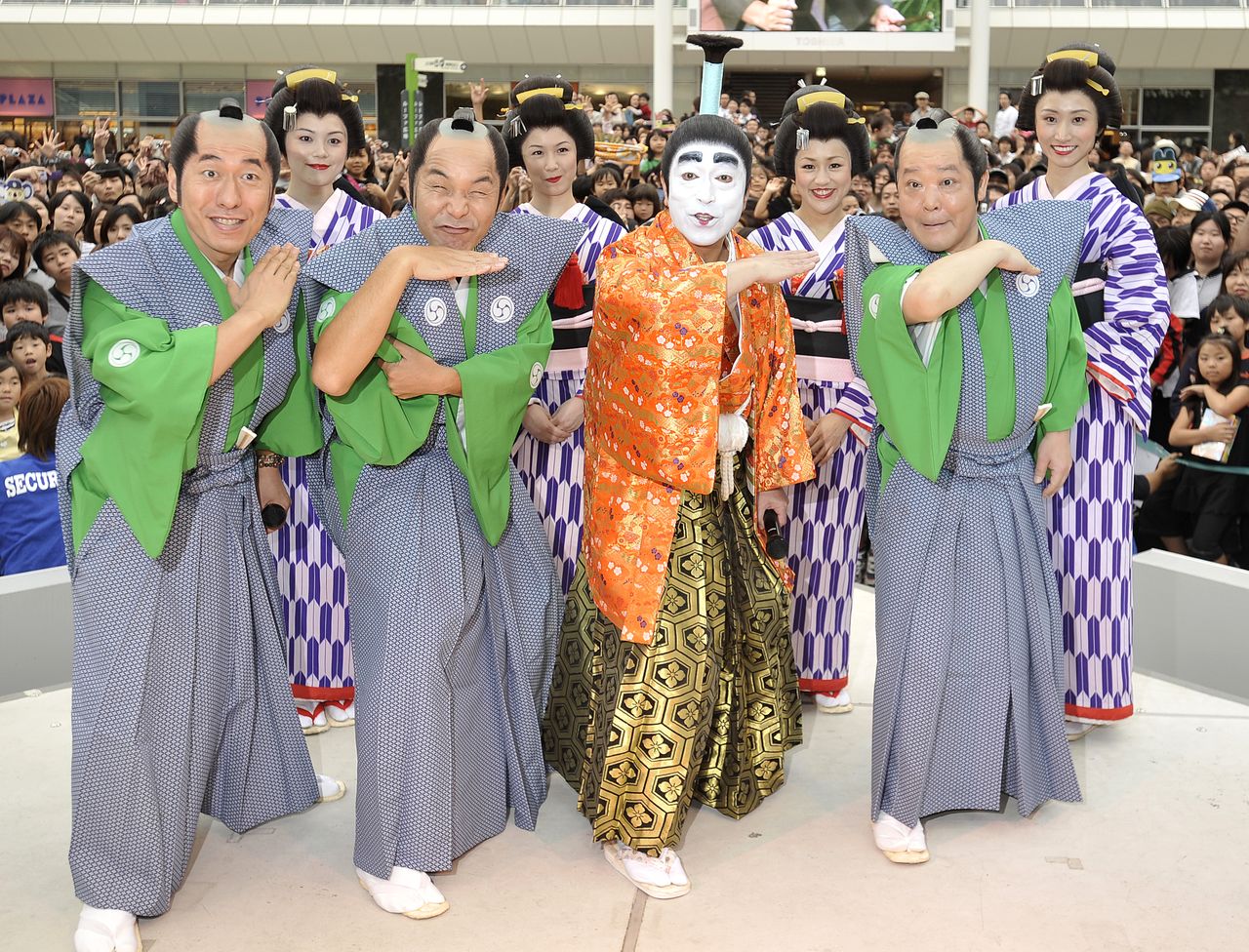
Shimura Ken, in makeup, performs a classic pose at a DVD sales event in September 2008. (© Jiji)
April 3
C. W. Nicol (79): Writer and environmental activist
Born in Britain, Nicol moved to Canada at the age of 17, where he became involved with research and protection of animals and the environment. He first came to Japan in 1962, and moved to Nagano Prefecture in 1980. Here he undertook further environmental protection activities, including buying up and restoring a neglected forest area he named Afan Woodland. In 1995, he became a Japanese citizen. He was also known for fiction and nonfiction writings such as Kaze o mita shōnen (The Boy Who Saw the Wind) and Hokori takaki Nihonjin de itai (I Want to Be a Proud Japanese). He was awarded a Member of the Order of the British Empire (MBE) in 2005.
April 10
Ōbayashi Nobuhiko (82): Film director
Ōbayashi began in the world of commercials, making advertisement films in Japan’s high-growth era featuring stars like Charles Bronson and Catherine Deneuve. His debut feature House later became a cult favorite overseas. Three hit films set in his hometown of Onomichi, Hiroshima Prefecture—Tenkōsei (I Are You, You Am Me), Toki o kakeru shōjo (The Little Girl Who Conquered Time), and Sabishinbō (Lonelyheart)—sparked a tourism boom there. While best known in Japan for films with idol stars such as Nerawareta gakuen (School in the Crosshairs), he also produced many pacifist works based on his own experiences in World War II. After he was told he had just six months to live in 2016, he continued his filmmaking activities. In 2019, he was named a Person of Cultural Merit.
To Read on Nippon.com:
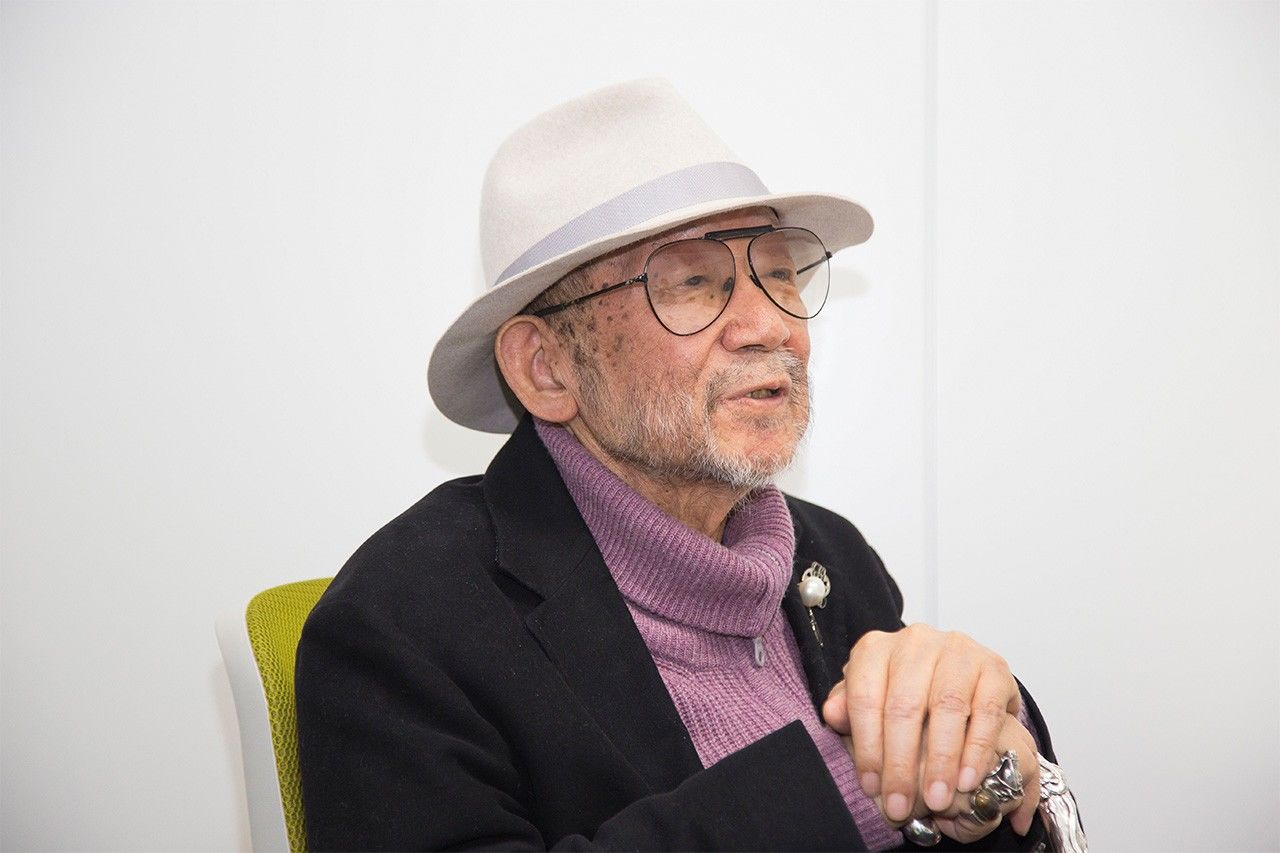
Ōbayashi Nobuhiko during a December 2017 interview with Nippon.com.
April 24
Okamoto Yukio (74): Former adviser to prime ministers
As a diplomat and prime ministerial adviser, Okamoto made great contributions to Japan-US relations from the late Cold War to after its closure. When some allies criticized the United States at the time of the Iraq War, Okamoto used his diplomatic skills and position within the Japanese government to lay the road for supporting Washington, and Iraqi reconstruction. Using his rich network of contacts, particularly in US diplomatic circles, he became a commentator. In 2020, however, he caught COVID-19 and passed away. Former US Deputy Secretary of State Richard Armitage called him a “giant” in Japan-US relations.
To read on Nippon.com:
June 5
Yokota Shigeru (87): Former leader of the Association of the Families of Victims Kidnapped by North Korea
Yokota Shigeru’s daughter Megumi disappeared while she was on her way back from school in November 1977. He and his wife Sakie appeared many times on television asking people to provide information until January 1997, when evidence from a North Korean defector revealed that Megumi had been kidnapped by the secretive state. Yokota became leader of the Association of the Families of Victims Kidnapped by North Korea, circulating petitions and making speeches to keep the issue in the public eye. Even after he stepped down as leader in 2007, due to ill health, he remained active, and helped achieve the target of 10 million signatures in April 2013. In March 2014, he met Megumi’s daughter Kim Eun-gyong for the first time in Mongolia, but did not have the chance to meet his daughter before his death.
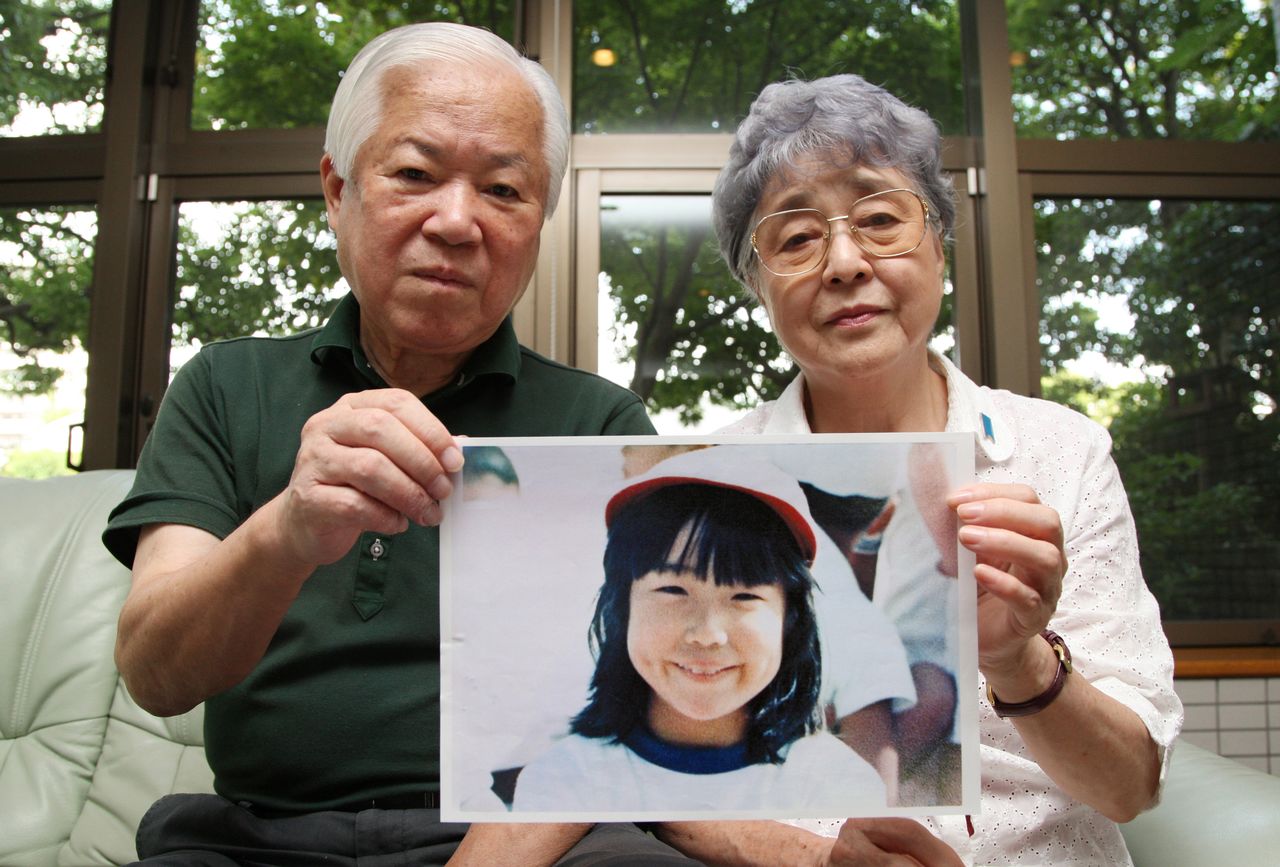
Yokota Shigeru and his wife Sakie hold a photograph of their daughter Megumi in September 2012. (© Jiji)
June 10
Kawasaki Tomisaku (95): Pediatrician and head of the Japan Kawasaki Disease Research Center
In 1961, Kawasaki first encountered the disease later named after him, which causes blood vessels to swell throughout the body, particularly in the case of infants and young children. Kawasaki disease became more widely known when he published his research in an academic journal in 1967. He served in posts including head of the Pediatrics Department of the Japanese Red Cross Medical Center. He received the Japan Academy Prize in 1991 and the Japan Pediatric Society Prize in 2006.
July 27
Yamamoto Kansai (76): Fashion designer
After dropping out of university to apprentice at the atelier of Koshino Junko, in 1967 Yamamoto received the Sōen Prize, opening up his route into the fashion industry. He became the first Japanese designer to have a fashion show in London in 1971, making a splash with kabuki stylings highlighting Japanese aesthetics. From 1974 to 1992, he participated in Paris, New York, and Tokyo fashion weeks. He also became known for designing stage costumes for rock stars like Elton John and David Bowie. From the 1990s, he became involved as an event producer for shows incorporating fashion with music and dance. In March 2020, it was announced that he was suffering from acute myeloid leukemia.
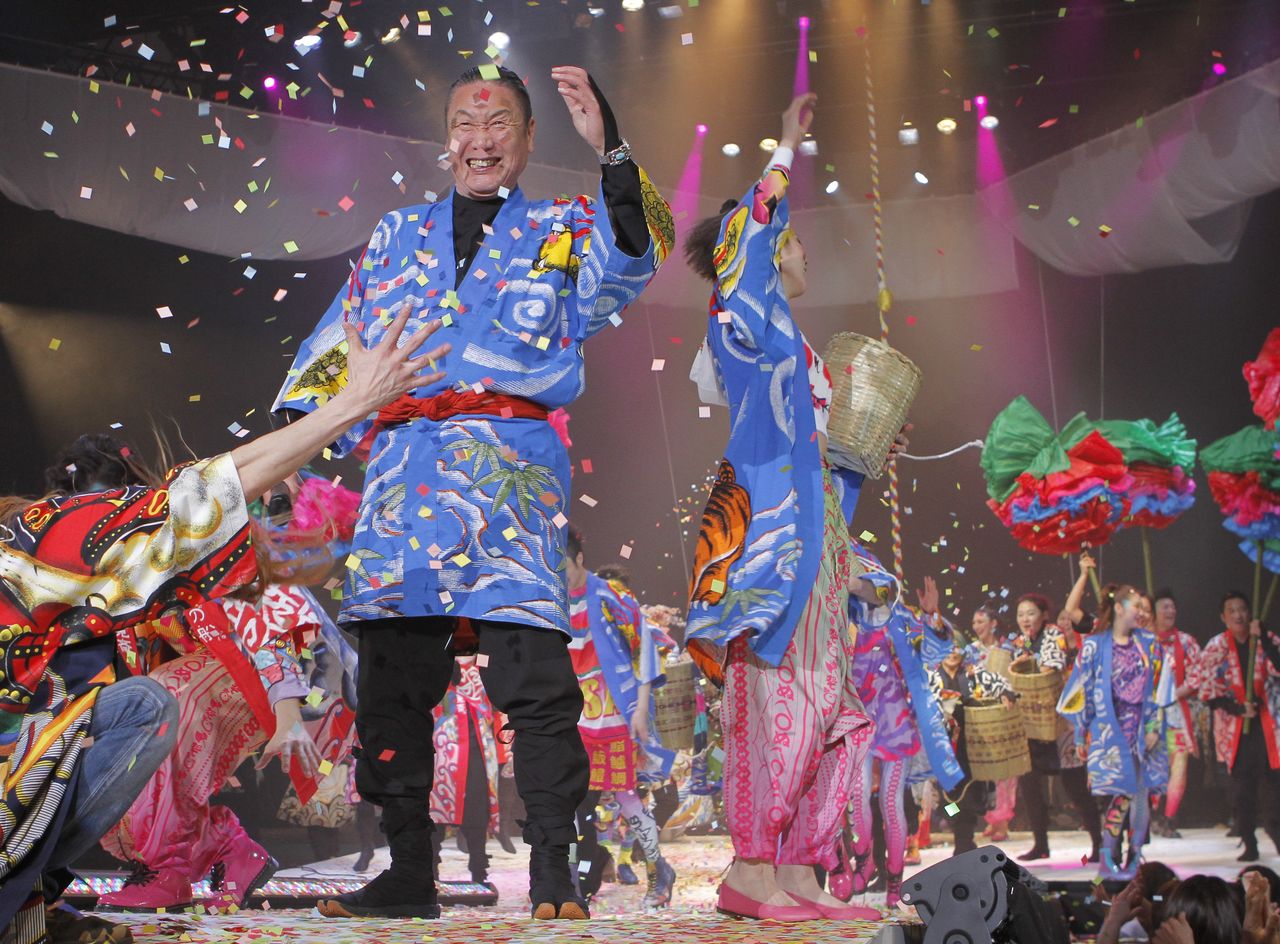
Yamamoto Kansai delighted spectators with energetic performances in the “Hello Japan!!” fashion show in March 2013. (© Jiji)
August 14
Watari Tetsuya (78): Actor
Watari began his acting career in 1964, when he auditioned to play alongside the actress Asaoka Ruriko and entered the Nikkatsu studio. He went on to stardom in action films, appearing in titles like the 1966 Tōkyō nagaremono (Tokyo Drifter). In 1971 he switched to the troubled Ishihara International Productions out of admiration for Ishihara Yūjirō. On television, Watari starred in numerous popular series, including Daitokai (The Big City) and Seibu keisatsu (Western Police). He became president of Ishihara Productions in 1987 following Ishihara’s death. In his later years, he took performers from the company to take part in relief activities in Tōhoku after the Great East Japan Earthquake devastated coastal regions there in March 2011.
August 23
Watanabe Kōzō (88): Former vice speaker of the House of Representatives
After a stint in the Fukushima prefectural assembly, Watanabe was elected to the House of Representatives in 1969 in the former Fukushima 2 district, and subsequently joined the Liberal Democratic Party. He was elected 14 successive times. He belonged to the LDP factions led by Tanaka Kakuei and Takeshita Noboru. He was also considered as one of the seven possible successors to Takeshita, and his posts included LDP diet affairs chair and minister for home affairs. In 1993, he left the LDP to form the Japan Renewal Party and then the New Frontier Party. Then in 2005, he joined the Democratic Party of Japan, where he became a leading figure. He was known for his Fukushima accent and friendly smile. After retiring from active politics, he continued to express his opinions as a commentator.
September 27
Takeuchi Yūko (40): Actress
A popular star of numerous films and television dramas during her career, including the NHK morning series Asuka (1999). Her death at her own hand, with no note left behind, shocked her fans; along with the July 18 suicide of young actor Miura Haruma (30), it called attention to mental health issues and the problem of suicide in Japan.
October 4
Takada Kenzō (81): Fashion designer
With his vivid floral patterns and ethnically inspired folkloresque designs, Takada won a following on the global fashion circuit. The founder of the brand Kenzo, he was one of Japan’s leading creators in the field. In 1958 he entered Bunka Fashion College Tokyo, which had just opened its doors to male students; in 1965 he headed to France, where he opened his own boutique in Paris in 1970. He was one of the first designers to spot the trend away from haute couture toward more affordable prêt-à-porter wear, earning high praise worldwide for his accessible designs. In 1984 France made him a Chevalier de l’Ordre des Arts et des Lettres, followed by membership in the Légion d’honneur in 2016. He designed the uniforms for the Japanese team at the 2004 Athens Olympic Games. He passed away at a Paris hospital from COVID-19 complications.
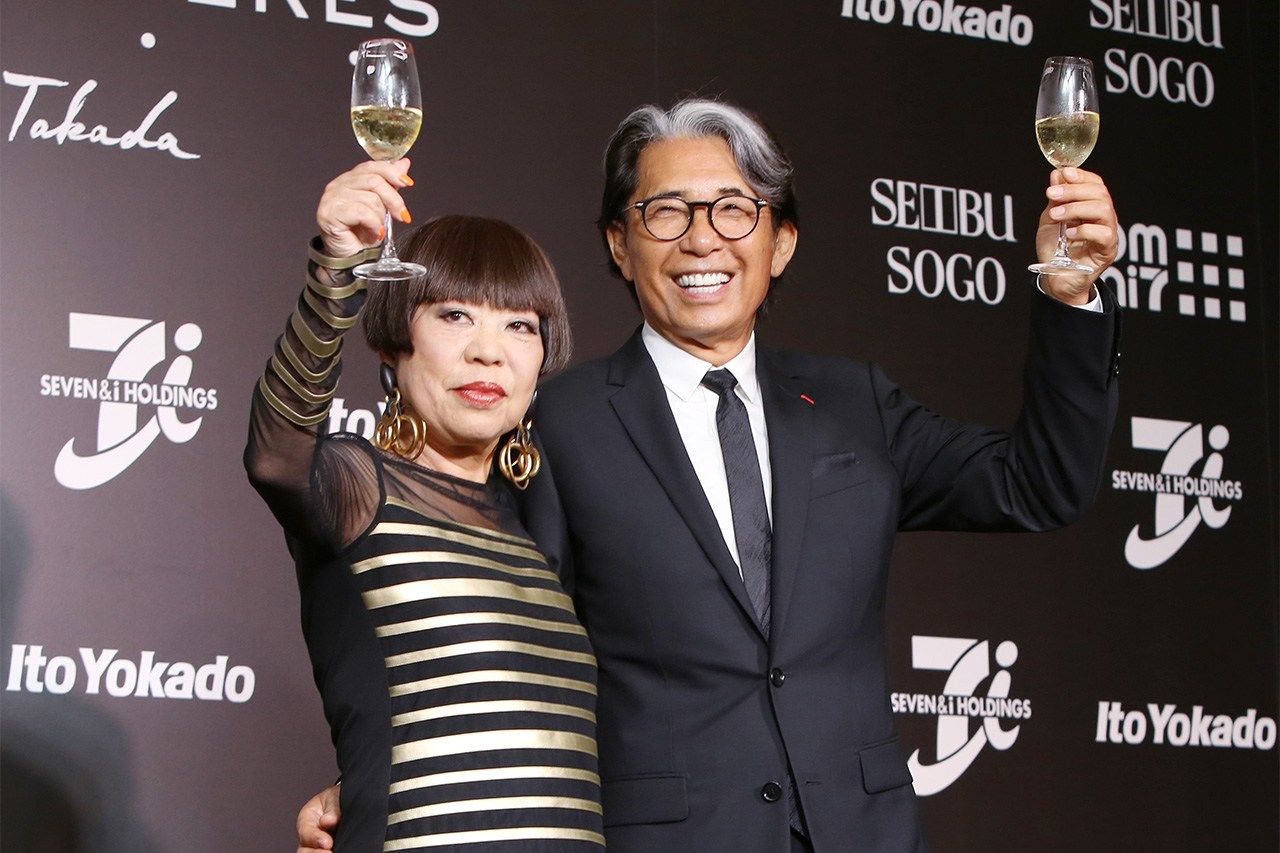
Takada Kenzō with fellow designer Koshino Junko, at left, at a September 2016 event launching the Seven and I private brand. (© Jiji)
October 12
Tsutsumi Kyōhei (80): Composer
After a stint working for a record label, Tsutsumi struck out on his own as a composer, earning his first hit with the 1968 “Burū raito Yokohama” (Blue Light Yokohama), penned for the singer Ishida Ayumi. He went on to write some 3,000 songs, including hits like Ozaki Kiyohiko’s 1971 “Mata au hi made” (Until We Meet Again) and Judy Ongg’s 1979 “Miserarete” (Love Is Calling Me). Perhaps his most famous composition was the theme song for the long-running anime series Sazae-san. In 2003 the Japanese government awarded him the Medal of Honor with Purple Ribbon.
November 12
Koshiba Masatoshi (94): Nobel Prize laureate, University of Tokyo distinguished professor
In order to observe proton decay, one theme of his research into atomic particles, Koshiba proposed the construction of the Kamiokande (Kamioka Nucleon Decay Experiment) detector, which was completed in 1983 in the Kamioka district of what is now Hida, Gifu Prefecture. Proton decay was not observed, but a repurposing of the underground facility to detect neutrinos led to the successful detection in February 1987 of neutrinos released by the supernova SN1987A in the Large Magellanic Cloud. In 2002 Koshiba won the Nobel Prize in Physics for his work. A successor to his detector, the Super Kamiokande facility, went online in 1996, eventually proving that neutrinos have mass. Kajita Takaaki who studied under Koshiba, won the 2015 Nobel Prize for this work, making Koshiba’s legacy one that stretched to a new generation of scientists.
November 14
Sakata Tōjūrō IV (88): Kabuki performer
Born Hayashi Hirotarō, Sakata played both tachiyaku male roles and onnagata female roles with fresh style and timeless dignity as he worked to revive the Kamigata kabuki tradition of the Kansai area. Born the eldest son of the kabuki actor Nakamura Ganjirō II, in 1941 he took the stage name Nakamura Senjaku II and launched his career. His 1953 performance as the courtesan Ohatsu in Sonezaki shinjū (The Love Suicides at Sonezaki) started a string of more than 1,400 appearances in the role, lasting until he was 84 years old. He took the name Sakata Tōjūrō in 2005, reviving it for the first time in 231 years. In 1994 he was named a living national treasure; in 2009 he received the Order of Cultural Merit.
December 7
Arima Akito (90): Physicist and former president of the University of Tokyo
A specialist in atomic nuclear structures, Arima served as president of the University of Tokyo from 1989 to 1993, when he became president of the Riken research institute. In 1998, at the urging of Prime Minister Hashimoto Ryūtarō, he ran for the House of Councillors, winning a proportional representation seat. As minister of education under Prime Minister Obuchi Keizō, he worked to advance the yutori kyōiku relaxation of educational standards and to boost research funding in higher education. An avid composer of haiku from his youth, he also published numerous poetry collections and, as president of the Haiku International Association, strove to gain UNESCO recognition for the art form as an intangible cultural heritage. In 2004 Japan awarded him the Order of Cultural Merit and the Grand Cordon of the Order of the Rising Sun; in 2010 he received the Order of Culture.
December 17
Hayashiya Konpei (77): Rakugo performer
Born Kasai Mitsuo, in 1958 he became a disciple of Hayashiya Sanpei I and rose rapidly through the rakugo world to achieve the highest rank of shin’uchi. For some four decades he was a popular regular on the Nippon TV comedy program Shōten; from 2005 until his death this year of pneumonia, he battled multiple sclerosis.
December 20
Ezra Vogel (90): Professor at Harvard University and Japan scholar
Vogel graduated from Ohio Wesleyan University before earning his PhD at Harvard, after which he came to Japan to study the language and country. He returned to teach at Harvard in 1967, serving as director of its East Asian Research Center in 1972–77. Among his numerous works on both China and Japan was Japan as Number One, a 1979 bestseller that praised Japan’s postwar approaches to business and inspired many to study the country and treat it as a serious competitor. He was also the National Intelligence Officer for East Asia at the National Intelligence Council in Washington in 1993–95.
(Originally published in Japanese. Banner photo: Comedian Shimura Ken, at left, and physicist Koshiba Masatoshi. © Jiji.)